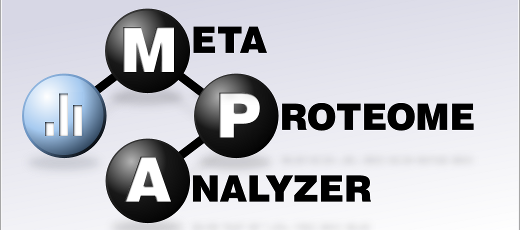In the tutorial we give a brief introduction into metaproteome analysis and the scope of the MetaproteomeAnalyzer software. For a detailed description for how to use the MPA software please download here the manual or watch the video tutorials. Furthermore, you will find a detailed description of the metaprotein concept here, which enables the grouping of redundant homologeous proteins. Finally, we provide a detailed description for the windows installation.
Metaproteomics analysis
In nature microorganisms live in complex microbial communities. Comprehensive taxonomic and functional knowledge about microbial communities supports medical and technical application such as fecal diagnosis as well as operation of biogas plants or waste water treatment plants. Furthermore, microbial communities are crucial for the global carbon and nitrogen cycle in soil and in the ocean. Among the methods available for investigation of microbial communities, metaproteomics can approximate the activity of microorganisms by investigating the protein content of a sample. Although metaproteomics is a very powerful method, issues within the bioinformatic evaluation impede its success. In particular, construction of databases for protein identification, grouping of redundant proteins as well as taxonomic and functional annotation pose big challenges. Furthermore, growing amounts of data within a metaproteomics study require dedicated algorithms and software. More information on metaproteomics data analysis can be found in the review “Challenges and perspectives of metaproteomic data analysis” (J Biotechnol., 2017)
Scope of the MetaProteomeAnalyzer software
The MetaProteomeAnalyzer software (MPA) is an intuitive open-source tool for metaproteomics data analysis and interpretation, which includes multiple search engines and the feature to decrease data redundancy by grouping protein hits to so-called metaproteins. The MPA provides a complete pipeline from peak lists generated by the mass spectrometer software to statistical analysis of results produced by protein database search. Since the MPA was developed for metaproteomics, many features focus on taxonomic and functional analysis of the discovered proteins. The protein groups called metaproteins constitute a core functionality of the MPA to properly abstract biologically relevant information from raw results. The MPA is not applicable to specialized proteomics questions like post-translational modifications (PTM) or quantification via isotope labelling.
